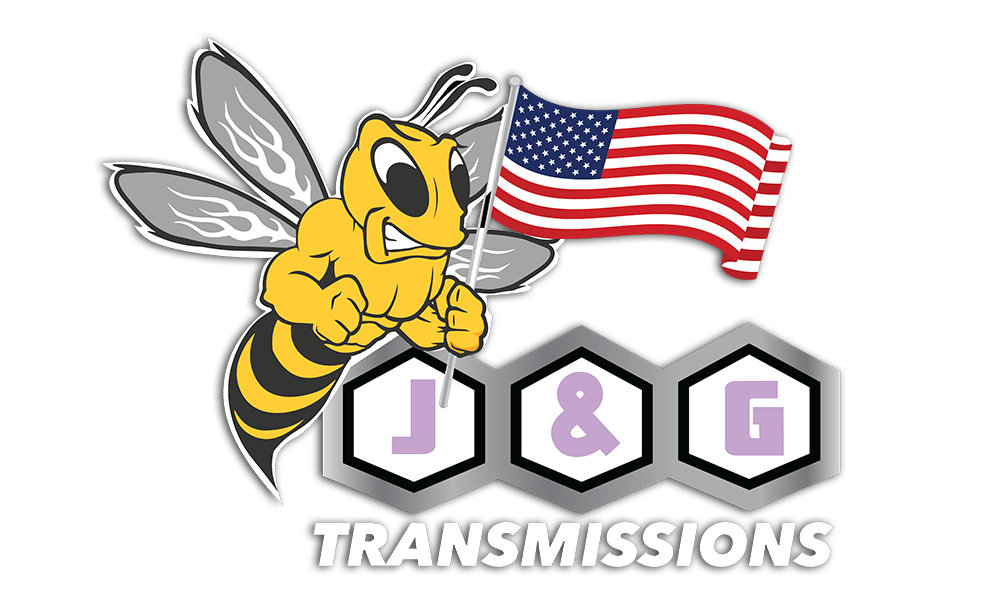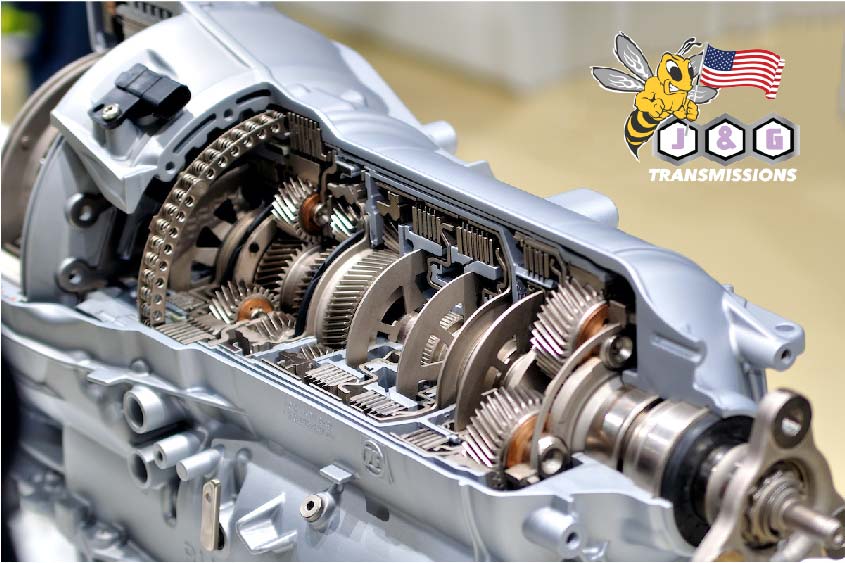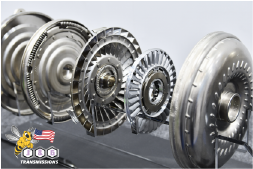Transmission problems can be a source of stress and confusion for many vehicle owners. When it comes to transmission repair, it’s natural to have questions. To help you better understand this critical component of your vehicle, we’ve compiled a list of frequently asked questions about transmission repair, along with detailed answers.
1. What are the common signs of transmission problems?
Common signs include slipping gears, rough or delayed shifting, strange noises (like grinding or whining), a burning smell, and warning lights on your dashboard.
2. How often should I service my transmission?
Regular transmission maintenance is crucial. Manufacturers often recommend servicing every 30,000 to 60,000 miles. Check your vehicle’s manual for specific intervals.
3. What is transmission fluid, and why is it important?
Transmission fluid lubricates and cools the transmission. It’s crucial for proper function. Low or dirty fluid can lead to damage. Ensure it’s at the correct level and clean.
4. Can I check my transmission fluid level myself?
Yes, you can, but it can be tricky. Consult your owner’s manual for instructions. Some vehicles require the engine to be running while checking, while others don’t. We can always assist you with this.
5. How much does transmission repair cost?
The cost varies widely depending on the issue, type of vehicle, and labor rates in your area. Minor repairs can cost a few hundred dollars, while major overhauls can cost several thousand dollars.
6. Is it better to repair or replace a damaged transmission?
It depends on the extent of the damage. Minor issues like a faulty solenoid or sensor may be repaired, while major internal damage often necessitates a replacement or rebuild. Contact J & G Transmissions for an honest opinion.
7. What is a transmission rebuild?
A transmission rebuild involves disassembling the transmission, replacing worn or damaged parts, and reassembling it to factory specifications. It’s often a cost-effective option compared to a full replacement. “Updating” the transmission uses more durable components and updated part designs to reduce future transmission problems.
8. How long does transmission repair take?
The time needed varies but typically ranges from one day to a week. Complex repairs or ordering specialized parts may extend the duration.
9. Can I drive with a slipping transmission?
Continuing to drive with a slipping transmission can cause further damage. It’s best to have it inspected and repaired promptly.
10. Is it possible to prevent transmission problems?
Regular maintenance, such as fluid flushing, changes, and inspections, can extend your transmission’s lifespan. Avoiding aggressive driving and towing beyond your vehicle’s capacity also helps.
11. Are there any DIY transmission repairs I can do?
Simple tasks like changing transmission fluid and filters can be done by DIY enthusiasts. However, major repairs and diagnostics should be left to professionals. If you find metal shavings inside your transmission when servicing it yourself, have it inspected by a professional.
12. How do I choose a reliable transmission repair shop?
Look for shops with experienced technicians, positive reviews, and proper certifications. Don’t hesitate to ask for references and estimates before committing. Find a shop that offers updates to your old transmission design.
13. Are transmission repairs covered by warranties?
New vehicles often come with a manufacturer’s warranty covering the transmission. Some repair shops also offer warranties on their work. Always clarify warranty terms. You typically get what you pay for when it comes to warranties.
14. Can transmission repair affect my vehicle’s fuel efficiency?
Yes, a well-maintained transmission can improve fuel efficiency. A poorly functioning transmission can cause your engine to work harder and consume more fuel.
In conclusion, understanding transmission repair is crucial for every vehicle owner. Regular maintenance, prompt attention to issues, and finding a reputable repair shop are keys to keeping your transmission running smoothly. If you ever encounter transmission problems, don’t hesitate to seek professional help to ensure your vehicle’s safety and longevity.
Still have a question about transmission repair or need transmission repair? Contact J & G Transmissions www.jandgtransmissions.com. Check us out on Facebook at: https://www.facebook.com/JandGTransmissions
Tag: transmission repair
What Does a Torque Converter Do?
Automatic transmissions have become the norm in modern vehicles, offering a convenient and comfortable driving experience. One of the critical components that make automatic transmissions possible is the torque converter. It plays a pivotal role in transmitting power from the engine to the wheels without the need for a clutch. In this blog, we will delve into their inner workings and understand their significance in automatic transmissions.
The Basics of Automatic Transmissions
Before we dive in, let’s briefly understand how automatic transmissions operate. Unlike manual transmissions, which require the driver to engage the clutch and shift gears manually, automatic transmissions do the shifting automatically based on the vehicle’s speed and engine load.
An automatic transmission consists of several components, including planetary gearsets, hydraulic systems, and the torque converter. Together, these components work in harmony to provide seamless gear changes and efficient power delivery.
What is a Torque Converter?
At the heart of an automatic transmission is the torque converter, a fluid coupling device that transmits power from the engine to the transmission. Its primary function is to transfer torque generated by the engine to the transmission input shaft, which eventually drives the wheels.
The torque converter operates using a principle of fluid mechanics. Inside the housing, there are three main elements: the impeller, the turbine, and the stator. These components work together to allow the torque converter to adjust its torque multiplication based on driving conditions.
How Does a Torque Converter Work?
When the engine is running, it drives the impeller, a curved blade fan located at the front of the torque converter. The impeller is immersed in transmission fluid. As it rotates, it creates a flow of fluid towards the turbine, which is connected to the transmission input shaft.
The rotating fluid from the impeller exerts force on the turbine blades, causing the turbine to rotate in the same direction as the impeller. This rotation, in turn, drives the transmission input shaft, allowing power to flow from the engine to the transmission.
However, the torque converter’s design allows for some slippage between the impeller and the turbine. This slip is particularly beneficial during idle or low-speed situations, as it prevents stalling and allows the engine to continue running even when the vehicle is stopped.
Lock-up Functionality for Improved Efficiency
To improve overall efficiency, many modern torque converters are equipped with a lock-up clutch. When the vehicle reaches higher speeds, the lock-up clutch engages, mechanically connecting the impeller and the turbine, eliminating the slippage. By doing so, the torque converter operates more efficiently, reducing heat generation and improving fuel economy.
Conclusion
The torque converter is a vital component of automatic transmissions, enabling seamless power transfer from the engine to the wheels without the need for a clutch. Its fluid coupling design allows for smooth gear changes and prevents stalling during idle or low-speed situations. Additionally, the lock-up functionality improves efficiency, contributing to better fuel economy in modern vehicles.
Next time you drive an automatic transmission-equipped vehicle, take a moment to appreciate the role of the torque converter, working diligently behind the scenes to provide you with a smooth and enjoyable driving experience. As technology continues to advance, we can expect further refinements in design, leading to even more efficient and responsive automatic transmissions. More info on transmission installation
and repair can be found on our Pro page: https://jandgtransmissions.com/automotive-pros/
Videos
Check out this video on how torque converters work: https://www.youtube.com/watch?v=z5G2zQ_3xTc
Common Mistakes with Torque Converter installation: https://www.youtube.com/watch?v=Buz27CTac7k&t=1s


